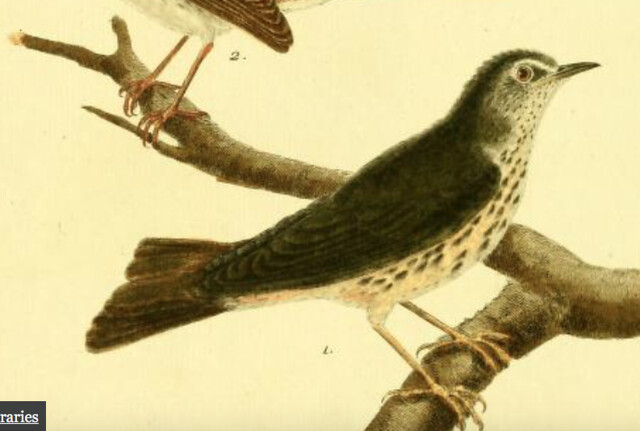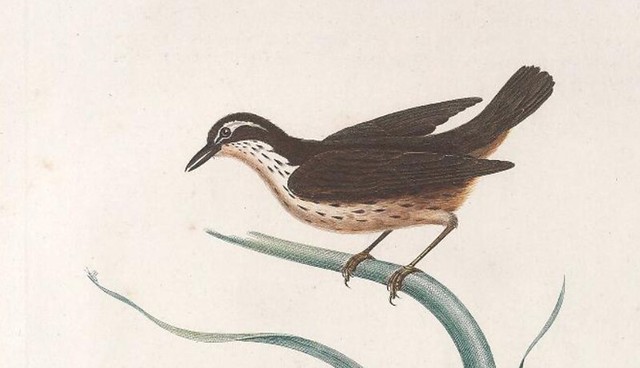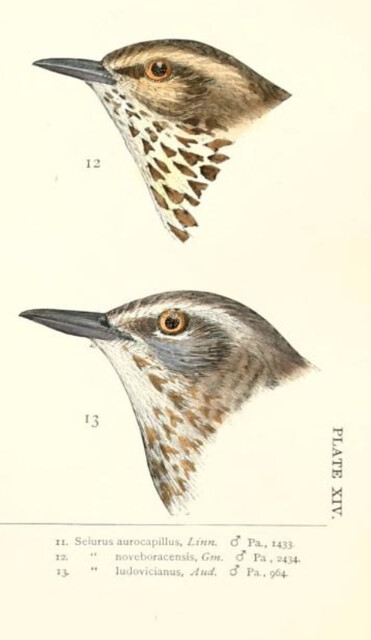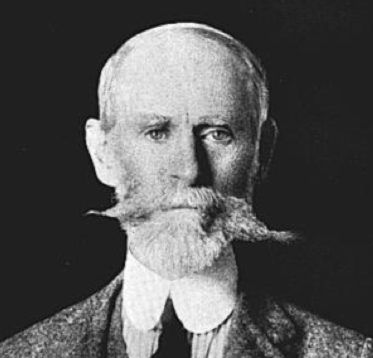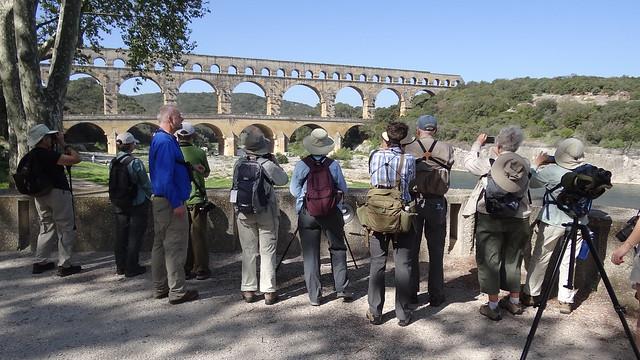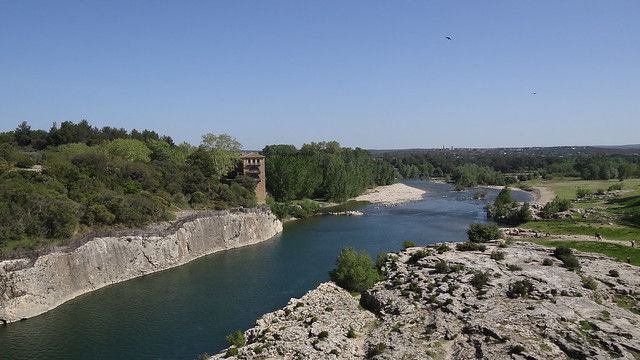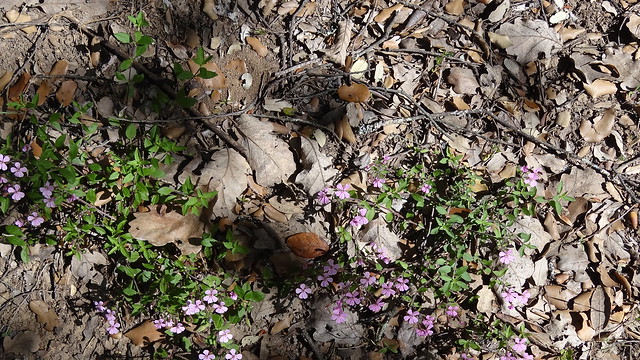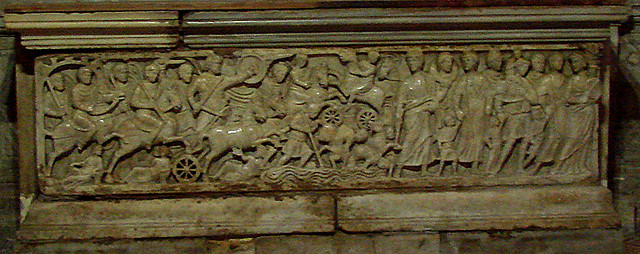In 1831, Audubon lauded the vocal skills of a particular brown warbler.
Much and justly as the song of the Nightingale is admired, I am inclined, after having often listened to it, to pronounce it in no degree superior to that of the Louisiana Water Thrush.
Audubon’s comparison to the nightingale was taken up and elaborated just a few months later by his colleague and correspondent Thomas Nuttall.
The silence of night is also, at times, relieved by the incesssant warble of this Western Philomel, whose voice, breaking upon the ear of the lonely traveler in the wilderness, seems like the dulcet lay of some fairy vision…. distinguished by the loudness, sweetness, and expressive vivacity of their notes, which, like the nightingale’s, beginning high and clear, flow and descend in a cadence so delicate as to terminate in sounds scarcely audible above the whispering breeze.
This purple passage is only partly Nuttall’s, much of it adapted from Alexander Wilson’s 1811 account of the bird he described as The Water Thrush.
Fascinating as it may be to unravel the clew of intertextuality in early American ornithology, what interests me is whether it is possible to determine which waterthrush each of these authors was listening to. All three recognized only one species (Audubon would later recant his “split” of the Louisiana from the northern waterthrush), but that, of course, does not mean that they were not hearing both.
It is immediately apparent that Wilson had experience with both of the waterthrush species recognized today. In spring 1810, “among the mountain streams in the state of Tennessee,” he found
a variety of this bird pretty numerous, with legs of a bright yellow color.
He also records an “abundance” of them “in the cane-breaks, swamps, river-shores, and deep watery solitudes of Louisiana … and the Mississippi territory,” all localities and habitats suited only to the Louisiana waterthrush.
But it is equally clear that he had experience of the northern waterthrush.
About the beginning of May it passes through Pennsylvania to the north; it is seen along the channels of our solitary streams for ten or twelve days; afterwards disappears until August.
Wilson gives no indication, though, that he ever heard any of these passage northerns utter anything other than a sharp chip. His description of a male waterthrush’s singing post is obviously that of the Louisiana, “perched on the middle branches of a tree over the brook or river bank.”
What about the nature of the song itself? Wilson, and after him Nuttall, describes it as at first “very high and clear, falling with an almost imperceptible gradation till [the individual notes] are scarcely articulated.” I can almost stretch this to apply to the song of the Louisiana waterthrush, but Wilson goes on to praise
his charming melody, that can be heard for nearly half a mile … so exquisitely sweet and expressive,
a poor fit for either waterthrush and nearly nonsensical in description of the Louisiana’s piercing whistles and quiet stutterings.
More puzzling still is the comparison with the nightingale. It is impossible, publication dates notwithstanding, to know whether it was Nuttall or Audubon who came up with it, but the analogy rings not particularly true — especially with the added detail that the bird sings at night. Unlike the Ovenbird, neither of our waterthrushes is especially given to nocturnal vocalizing, though both species are known to have a crepuscular flight song.
Audubon certainly knew the song of the nightingale well, and Nuttall, though he was a Yorkshire boy, surely had occasion to hear it in southern England a time or two. (Wilson, alas, most likely knew the species only from poetry.)
It is hard for me to imagine that anyone who had ever listened to the slow, low-pitched, neatly separated phrases of a nightingale could be reminded of either of our waterthrush species. Slow a northern’s song down, with some pauses insert for breath, and I could almost be convinced that there is a similarity with the Old World singer, but only almost.
I think instead that the description of the waterthrush’s (or the waterthrushes’) song in all three of our authors is a composite, made up of bits of the northern song, bigger bits of the Louisania song (avant la lettre!), and lots of the song of one of the notorious night singers — a mockingbird or a yellow-breasted chat, both of which sing their slow, low-pitched and evenly spaced phrases from southern thickets day and night.
It’s no wonder it took us so long to figure the waterthrushes out.


